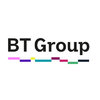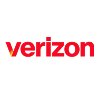Filter interviews by
Bharti Airtel Network Engineer Interview Questions and Answers
27 Interview questions
Culture is the shared values, beliefs, and practices that shape a group's identity and influence behavior.
Culture encompasses language, traditions, and customs, such as how holidays are celebrated.
It influences social norms, like greetings or dining etiquette, varying from one culture to another.
Art, music, and literature are expressions of culture, reflecting the history and values of a community.
Workplace cultur...
TCP and IP are fundamental protocols in computer networking. They relate to the OSI model by defining the rules for communication.
TCP (Transmission Control Protocol) is responsible for establishing and maintaining a connection between two devices, ensuring data is reliably transmitted.
IP (Internet Protocol) is responsible for addressing and routing packets of data across networks.
TCP and IP together form the basis...
IP addresses are divided into classes based on the first octet, with each class having a specific range of addresses.
Class A: 1.0.0.0 to 126.0.0.0 (ex. 10.0.0.0)
Class B: 128.0.0.0 to 191.255.0.0 (ex. 172.16.0.0)
Class C: 192.0.0.0 to 223.255.255.0 (ex. 192.168.0.0)
Class D: 224.0.0.0 to 239.255.255.255 (reserved for multicast)
Class E: 240.0.0.0 to 255.255.255.255 (reserved for future use)
Networks are essential for communication between devices, allowing data to be shared and accessed.
Networks consist of interconnected devices such as computers, servers, routers, and switches.
Data is transmitted across networks using protocols like TCP/IP.
Network engineers design, implement, and maintain network infrastructures to ensure reliable communication.
Examples of network technologies include Ethernet, Wi-F...
TCP/IP is a set of protocols used for communication between devices on a network.
TCP (Transmission Control Protocol) ensures reliable data delivery.
IP (Internet Protocol) handles addressing and routing of data packets.
TCP/IP is the foundation of the internet and allows devices to communicate with each other.
Examples of TCP/IP applications include web browsing, email, and file transfer.
Network topology refers to the layout of a network and how different devices are connected.
Network topology defines how devices are arranged and connected in a network
Common network topologies include bus, star, ring, mesh, and hybrid
Each topology has its own advantages and disadvantages
Examples: Bus topology - all devices connected to a single cable; Star topology - all devices connected to a central hub
Virtualization is the process of creating a virtual version of a device or resource, such as a server, storage device, network or operating system.
Virtualization allows multiple virtual instances to run on a single physical machine
It helps in optimizing resources and improving efficiency
Examples include VMware for server virtualization, VirtualBox for desktop virtualization
Network Non Stop is a feature that allows for continuous network operation without interruption.
Network Non Stop ensures uninterrupted network operation during maintenance or upgrades.
It allows for seamless failover and redundancy to prevent downtime.
Examples include Cisco Nonstop Forwarding (NSF) and Virtual Router Redundancy Protocol (VRRP).
RFS ready for service refers to the status of a network element or service that is ready to be used by end-users.
RFS is a term commonly used in telecommunications and networking industries
It indicates that a network element or service has been tested and is ready for use by end-users
RFS is often used in the context of new installations or upgrades
For example, when a new cell tower is installed, it is not considere...
Node insertion for Eci node
Node insertion involves physically installing a new node into the network
For Eci nodes, the process may involve configuring the node's IP address and connecting it to the network
Proper documentation and testing should be done before and after node insertion
Bharti Airtel Network Engineer Interview Experiences
27 interviews found
(2 Questions)
- Q1. Network architecture
- Q2. LAN TECHNOLOGY in detail
- Ans.
LAN technology refers to the methods and protocols used to create local area networks for connecting devices within a limited geographical area.
LAN technology includes Ethernet, Wi-Fi, and Token Ring.
Ethernet is the most common LAN technology, using CSMA/CD for collision detection.
Wi-Fi uses wireless signals to connect devices within a LAN.
Token Ring is a less common LAN technology that uses a token-passing protocol.
LA...
(7 Questions)
- Q1. OSI MODEL and Layers
- Q2. Router technique
- Ans.
Router technique refers to the method used by a router to determine the best path for forwarding data packets.
Routing protocols like OSPF, EIGRP, and BGP are used to determine the best path for data packets
Static routing involves manually configuring the routes on the router
Dynamic routing allows routers to communicate with each other to determine the best path
Packet switching is used by routers to forward data packets...
- Q3. OSI Model layer functionality
- Ans.
The OSI Model defines the functions of each layer in a network communication system.
Physical layer - transmits raw data bits over a physical medium
Data link layer - provides error detection and correction, and organizes data into frames
Network layer - routes data packets between different networks
Transport layer - ensures reliable data delivery and manages end-to-end communication
Session layer - establishes, maintains,...
- Q4. Routing Technology
- Q5. TCP IP MODEL in detail
- Ans.
TCP/IP model is a conceptual framework used for understanding networking protocols.
Consists of four layers: Application, Transport, Internet, Link
Each layer has specific functions and protocols
Data is encapsulated and decapsulated as it moves through the layers
Example: HTTP operates at the Application layer, TCP at the Transport layer
- Q6. FTTH technology
- Q7. Network Troubleshooting
(3 Questions)
- Q1. Introduce yourself
- Q2. Question about last job profile
- Q3. Salary excepted
Skills evaluated in this interview
I applied via Job Portal
(2 Questions)
- Q1. Good job bahut achcha hao
- Q2. Good job bahut achcha h
Interview Preparation Tips
(2 Questions)
- Q1. Wha about network
- Ans.
Networks are essential for communication between devices, allowing data to be shared and accessed.
Networks consist of interconnected devices such as computers, servers, routers, and switches.
Data is transmitted across networks using protocols like TCP/IP.
Network engineers design, implement, and maintain network infrastructures to ensure reliable communication.
Examples of network technologies include Ethernet, Wi-Fi, an...
- Q2. What about OSI model
- Ans.
The OSI model is a conceptual framework that standardizes the functions of a telecommunication or computing system into seven layers.
The OSI model stands for Open Systems Interconnection model.
It helps in understanding how data is transferred over a network.
Each layer has specific functions and communicates with adjacent layers.
Examples of layers include physical layer, data link layer, network layer, transport layer, ...
I applied via Naukri.com and was interviewed in Aug 2024. There were 3 interview rounds.
Aptitude test ,game round was asked
(1 Question)
- Q1. What are network topology
- Ans.
Network topology refers to the layout of a network and how different devices are connected.
Network topology defines how devices are arranged and connected in a network
Common network topologies include bus, star, ring, mesh, and hybrid
Each topology has its own advantages and disadvantages
Examples: Bus topology - all devices connected to a single cable; Star topology - all devices connected to a central hub
(1 Question)
- Q1. Your strength and weakness
- Ans.
Strength: Strong problem-solving skills. Weakness: Sometimes too detail-oriented.
Strength: Ability to troubleshoot complex network issues efficiently
Strength: Strong understanding of network protocols and technologies
Weakness: Tendency to get caught up in minor details, potentially slowing down progress
Interview Preparation Tips
Skills evaluated in this interview
- Q1. BGP Protocol must prepared
- Q2. MPLS should be prepared
- Q3. Osi Model and TCP/ UDP
I applied via Walk-in
(1 Question)
- Q1. About OSPF & CCNA level
(1 Question)
- Q1. Explain about your hobbies
- Q1. What is your definition of culture?
- Ans.
Culture is the shared values, beliefs, and practices that shape a group's identity and influence behavior.
Culture encompasses language, traditions, and customs, such as how holidays are celebrated.
It influences social norms, like greetings or dining etiquette, varying from one culture to another.
Art, music, and literature are expressions of culture, reflecting the history and values of a community.
Workplace culture aff...
- Q2. Incriminating on behalf of
I applied via Approached by Company and was interviewed in Mar 2023. There were 4 interview rounds.

Aptitude Test Verbal Ability test
Group Discussion of General Day to Day life activities
(5 Questions)
- Q1. One to one interview
- Q2. Brief Network Non Stop in 8 min ?
- Ans.
Network Non Stop is a feature that allows for continuous network operation without interruption.
Network Non Stop ensures uninterrupted network operation during maintenance or upgrades.
It allows for seamless failover and redundancy to prevent downtime.
Examples include Cisco Nonstop Forwarding (NSF) and Virtual Router Redundancy Protocol (VRRP).
- Q3. CCNA questions basic to.Advance
- Q4. Network Operation
- Q5. Network security
(1 Question)
- Q1. Bgp attributes and ospf lsa
I applied via Referral and was interviewed before Apr 2023. There were 3 interview rounds.
(2 Questions)
- Q1. Concepts on network technology, cloud
- Q2. What is Virtualization
- Ans.
Virtualization is the process of creating a virtual version of a device or resource, such as a server, storage device, network or operating system.
Virtualization allows multiple virtual instances to run on a single physical machine
It helps in optimizing resources and improving efficiency
Examples include VMware for server virtualization, VirtualBox for desktop virtualization
(1 Question)
- Q1. IPSEC, Firewall
(1 Question)
- Q1. Salary negotiations.
Skills evaluated in this interview
Top trending discussions






Bharti Airtel Interview FAQs
Some of the top questions asked at the Bharti Airtel Network Engineer interview -
The duration of Bharti Airtel Network Engineer interview process can vary, but typically it takes about less than 2 weeks to complete.
Tell us how to improve this page.
Bharti Airtel Interviews By Designations
- Bharti Airtel Territory Sales Manager Interview Questions
- Bharti Airtel Accounts Manager Interview Questions
- Bharti Airtel Network Engineer Interview Questions
- Bharti Airtel Sales Executive Interview Questions
- Bharti Airtel Territory Manager Interview Questions
- Bharti Airtel Assistant Manager Interview Questions
- Bharti Airtel Store Manager Interview Questions
- Bharti Airtel NOC Engineer Interview Questions
- Show more
Interview Questions for Popular Designations
- Software Engineer Interview Questions
- Senior Engineer Interview Questions
- System Engineer Interview Questions
- Engineer Interview Questions
- NOC Engineer Interview Questions
- Senior Network Engineer Interview Questions
- Network Support Engineer Interview Questions
- Network Security Engineer Interview Questions
- Show more
Overall Interview Experience Rating
based on 31 interview experiences
Difficulty level
Duration
Network Engineer Interview Questions from Similar Companies
Bharti Airtel Network Engineer Reviews and Ratings
based on 270 reviews
Rating in categories
|
Assistant Manager
2.3k
salaries
| ₹4.2 L/yr - ₹10 L/yr |
|
Network Engineer
1.5k
salaries
| ₹2.2 L/yr - ₹6.9 L/yr |
|
Manager
1.4k
salaries
| ₹10 L/yr - ₹16 L/yr |
|
Territory Sales Manager
1.3k
salaries
| ₹4 L/yr - ₹9.3 L/yr |
|
Accounts Manager
1.2k
salaries
| ₹3.5 L/yr - ₹7 L/yr |

Jio

Vodafone Idea

Ericsson

Tata Communications
- Home >
- Interviews >
- Bharti Airtel Interview Questions















